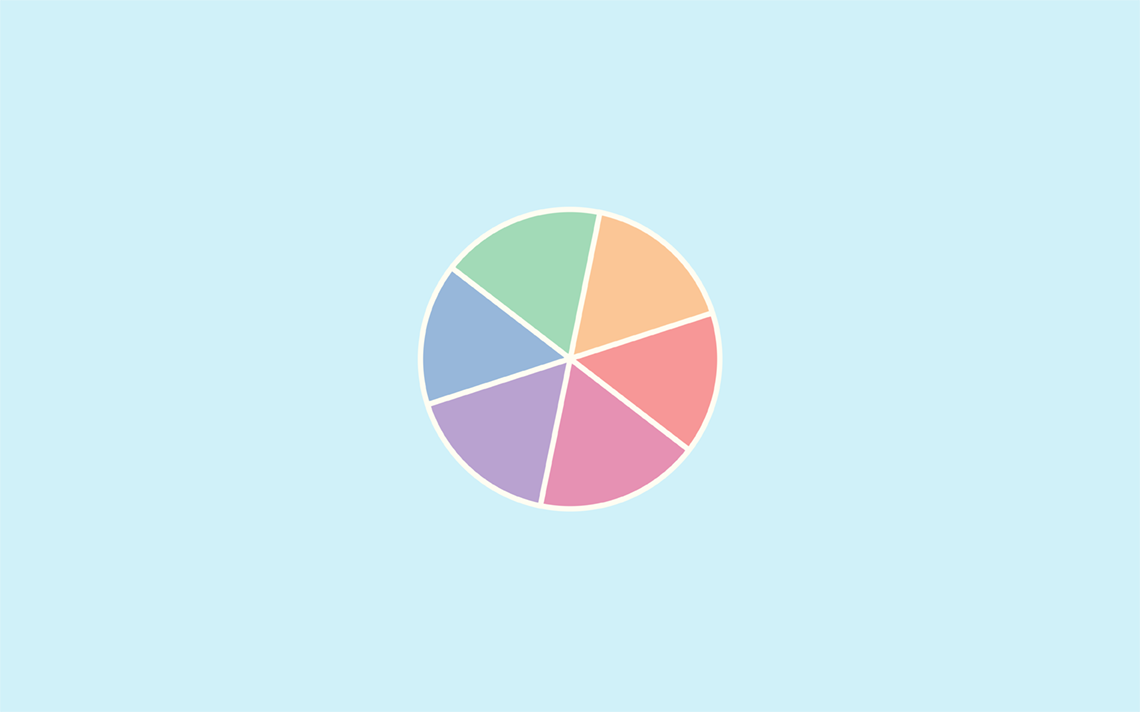Bloom’s Taxonomy: What is it and how can you apply it in your classroom?
Editor’s Note:
This is an updated version of the Bloom’s Taxonomy blog post published on 9 March, 2020.
Ever heard of Bloom’s Taxonomy? Put simply, it’s a hierarchy of mental, emotional and practical skills that can help you prompt deeper thinking in your learners.
To really master something in maths, your learners need to understand the topic inside and out, care about why they are learning it and practice, practice, practice. These three facets of learning: thinking, feeling and doing can be developed by applying Bloom’s Taxonomy to your lessons.
What is Bloom’s Taxonomy?
Benjamin Bloom (1931–1999) was an American educational psychologist. By focusing on the mastery of learning, his ideas developed into what is known as Bloom’s Taxonomy.
Bloom’s Taxonomy is a hierarchy of learning objectives. It’s original purpose was to give educators a common language to talk about curriculum design and assessment. Today, it’s used by teachers all around the world.
Bloom’s Taxonomy consists of three domains that reflect the types of learning we all do. Each domain has different levels of learning, ordered from the simplest to the most complex and associated with relevant action verbs.
- The cognitive domain: thinking and experiencing
- The affective domain: emotion and feeling
- The psychomotor domain: practical and physical
Bloom’s Taxonomy is a useful tool for teachers in the planning process. I often have a Bloom’s poster in front of me for lesson planning and for finding the right verbs for learning intentions or objectives.
What is learning in the cognitive domain?
The cognitive domain is all about knowledge and mental skills. As you move up the levels, the thinking skills become more sophisticated.
Benjamin Bloom and David Krathwohl described the original cognitive domain in 1956. But a lot has changed since then!
Since 1956, Bloom and his team of researchers have had a few criticisms of the original model. Advances in cognitive psychology prompted Lorin Anderson and David Krathwohl to publish a new version of the cognitive domain in 2001.
So let’s look at the levels and action verbs in a little more detail.
- Remembering: recall facts and basic concepts
Define, identify, describe, recognise, tell, explain, recite, memorise, illustrate, state, match, select, examine, locate, recite, enumerate, record, list, quote, label - Understanding: explain ideas and concepts
Summarise, interpret, classify, compare, contrast, infer, relate, extract, discuss, distinguish, predict, indicate, inquire, associate, explore, convert - Applying: use information in new situations
Solve, change, relate, complete, use, sketch, teach, articulate, discover, transfer, show, demonstrate, involve, produce, report, act, respond, prepare, manipulate - Analysing: make connections between ideas
Contrast, connect, relate, devise, correlate, illustrate, conclude, categorise, take apart, problem-solve, deduce, conclude, devise, subdivide, calculate, order, adapt - Evaluating: justify a decision
Criticise, reframe, judge, defend, appraise, value, prioritise, plan, reframe, revise, refine, argue, support, evolve, decide, re-design - Creating: produce new or original work
Design, modify, role-play, develop, rewrite, pivot, modify, collaborate, invent, write, formulate, imagine
When putting together a maths lesson plan, it’s worth noting that it’s often necessary to ‘apply’ before introducing new concepts (remember, understand) so the real-world context comes first, and the theory comes second.
Here’s an example: When teaching volume in litres you might want to look at the volume of real objects before you introduce the theory of volume. By doing this, you’re encouraging children to ground their new learning in a familiar context.
There’s some debate around how useful it is to see cognitive milestones as a hierarchy. But practically, the progressive levels help you to differentiate activities and provide greater depth for advanced learners.
What is learning in the affective domain?
If the cognitive domain focuses on the mind, then the affective domain is all about the heart.
Learning in the affective domain describes the way people react emotionally and their ability to feel others’ pain or joy. It’s all about the awareness and growth in attitudes, emotion and feelings.
Although the affective domain is part of what we call Bloom’s Taxonomy, it wasn’t described by Benjamin Bloom. The affective domain was categorised by Bloom’s collaborator David Krathwohl in 1964.
So, let’s take a look at how the affective domain describes emotional growth along with the action verbs for each level.
- Receiving: paying attention in a passive way
Ask, choose, describe, follow, give, hold, identify, locate, name, point to, select, sit, reply, use - Responding: active participation
Answer, assist, aid, comply, conform, discuss, greet, help, label, perform, practice, present, read, recite, report, select, tell, write - Valuing: attaching value to learning
Complete, demonstrate, differentiate, explain, follow, form, initiate, invite, join, justify, propose, read, report, select, share, study, work - Organisation: comparing, relating and elaborating
Adhere, alter, arrange, combine, compare, complete, defend, explain, formulate, generalise, modify, order, organise, prepare, relate, synthesise - Characterisation: building abstract knowledge of their own
Act, discriminate, display, influence, listen, modify, perform, practice, propose, qualify, question, revise, serve, solve, verify
Think about a positive learning experience of your own. How did you approach it? Can you identify the stages? How does it contrast with a negative learning experience you have had?
Become Qualified to Make a Difference
Empower yourself to create a lasting impact in pupils’ lives. Gain maths mastery certificates that will represent all you’ve accomplished and learned in your teaching journey.
From Fellow, to Expert, to Master — you can take the pathway to certified success!

What is learning in the psychomotor domain?
So far the domains have covered thinking and feeling, the psychomotor domain is the final piece of Bloom’s puzzle — physical skills.
The psychomotor domain is action-based and basically it means to change or develop in behaviour or skills. It describes how learning a physical skill begins with observation and progresses to mastery.
Bloom and his research team didn’t complete any work on the psychomotor domain. It was developed much later in the early 1970s. A number of different researchers have suggested different taxonomies to describe how skills and coordination develop.
The model here is the taxonomy developed by Elizabeth Simpson in 1972 which describes how physical skills develop.
- Perception: sensing cues for motor activity
Choose, describe, detect, distinguish, identify, isolate, relate, select - Set: readiness to act
Begin, display, explain, move, proceed, react, show, state, volunteer - Guided response: imitation and then trial and error practice
Copy, trace, follow, react, reproduce, respond - Mechanism: the growth of a habit and greater confidence
Assemble, construct, dismantle, display, manipulate, measure, organise, sketch - Complex overt response: skilful performance and proficiency
Assemble, construct, dismantle, display, manipulate, measure, organise, sketch
(the verbs are the same as mechanism but will have adverbs or adjectives that indicate that the performance is quicker, better, or more accurate) - Adaption: the ability to develop and modify these skills
Adapt, alter, change, rearrange, reorganise, revise, vary - Origination: the ability to create new movement patterns with the new skills
Arrange, build, combine, compose, construct, create, design, initiate, make, originate
You might think ‘what do physical skills have to do with learning maths?’ But actually, ‘doing maths’ means following certain steps in order, being accurate, adapting a method when needed and ultimately coming up with new methods to solve problems.
The structure of the three-part maths mastery lesson mirrors the levels of the psychomotor domain. The guided response aligns with the guided practice. Learners then move to independent practice before reflecting on their learning by doing a maths journal activity.
How to apply Bloom’s Taxonomy in your classroom
Building on earlier research by Piaget and Vygotsky, Bloom’s work suggests that thinking skills develop through cognitive challenge. So, how can you use Bloom’s Taxonomy to develop this in your teaching?
Use the action verbs to inform your learning intentions
There are lots of different graphics that combine all the domains and action verbs into one visual prompt. Once you’ve found your favourite, keep it handy! Use it to be deliberate about where you are pitching lessons and avoid falling into the trap of using the same old learning objective verbs all the time.
Use Bloom-style questions to prompt deeper thinking
The questions we use can have a massive impact on learners in making connections, moving their thinking to another level and developing cognitively.
A remembering-type question could be “how many?” Analysing requires a question which prompts further thought, such as “what is the underlying theme?” To inspire more creative thought, you could ask “what would happen if?” or “how many ways can you?”
Use Bloom’s Taxonomy to differentiate your lessons
Use your verbs resource and your questions resource to help you differentiate your lessons. You can apply higher-order thinking skills and verbs in class discussions. Or provide an extra challenge for early finishers and develop depth for those advanced learners who are ready to go further.
Bloom’s three domains remind us that learning isn’t a detached intellectual process but the sum of what we are understanding, feeling and actively practicing.
Think about which of your current learners are struggling emotionally and can only passively receive what you are teaching? Who could do with some critical, thought-provoking questions to encourage their enthusiasm for learning? Which questions could promote cognitive development in your struggling learners? I’m sure names and faces will spring to mind.
Perhaps Bloom’s Taxonomy can provide you with the fresh energy and inspiration you need.
Learn more:
How using classroom space can develop positive learning behaviour
This questioning technique strengthens maths lessons and challenges advanced learners
Setting up your ‘ethos for learning’ — tips from an expert
References
Anderson, L.W. and Krathwohl, D. R., et al (Eds..) (2001) A Taxonomy for Learning, Teaching, and Assessing: A Revision of Bloom’s Taxonomy of Educational Objectives. Allyn & Bacon. Boston, MA (Pearson Education Group)
Bloom, B.S. and Krathwohl, D.R. (1956) Taxonomy of Educational Objectives: The Classification of Educational Goals, by a committee of college and university examiners. Handbook I: Cognitive Domain. NY, NY: Longmans, Green.
Simpson, E.J. (1972) The Classification of Educational Objectives in the Psychomotor Domain. DC: Gryphon House
